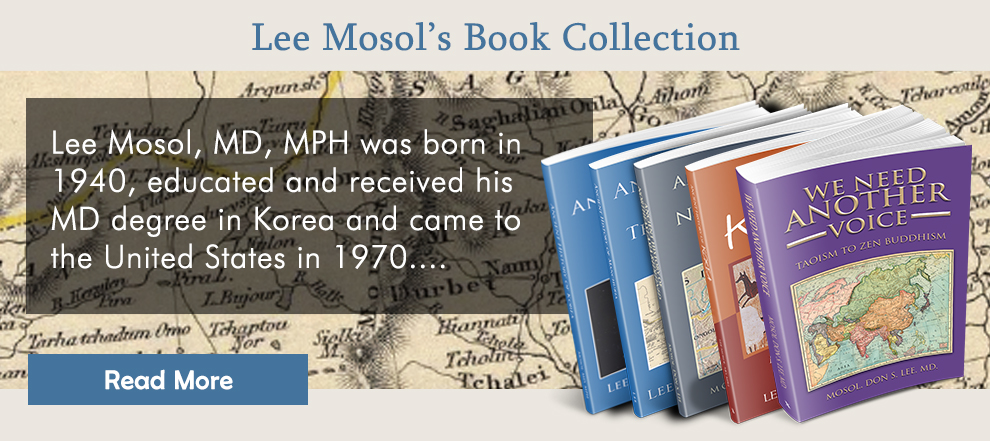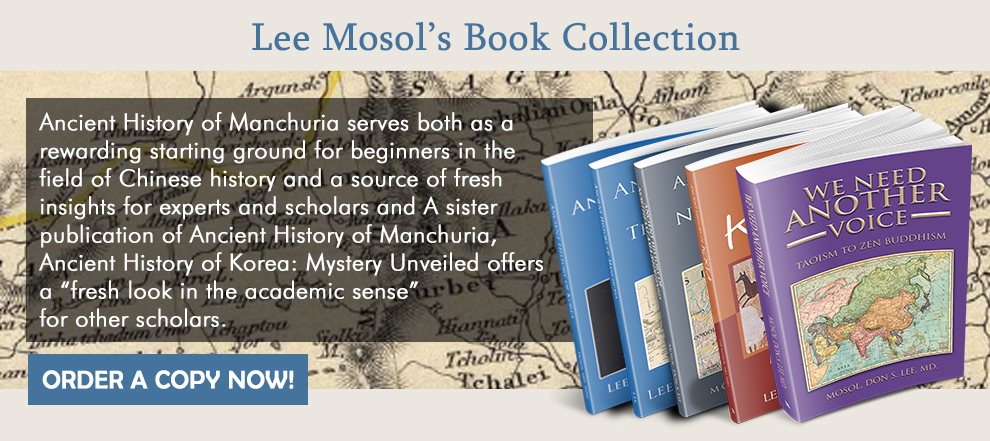The birthplace of Ancient Korea(古朝鮮)-Discussion-2
Presentation of pertinent evidences.
Main text-2
Logic is the tool to settle any disputes:
It is well established in the western culture and implied to every sects of sciences including the law, but not in the Chinese culture.
One unique aspect of Chinese logics is the failure of nomenclature. The failure of nomenclature is apparent as seen in the White Horse Discourse (白馬論) which was interpreted in the “https://ctext.org” by Donald Sturgeon. Gong-sun Long (公孫龍: c. 325–250 BC) was an eloquent speaker(辯士) equal to Yan Zi(晏子: c. 578–500 BC) who left the Yanzi chunqiu . They considered him as the pioneer to the School of Names(名家) which is better to be interpreted as School of Nomenclature instead . They were outstanding debaters.
Gong-sun Long wrote the dialectic analysis of the question. The phrase “白馬非馬”, literally “White horse is Not horse” in the section White Horse Dialogue . He didn’t recognize the way of using logograms known as Liùshū (六書) by the northerner in Shanxi province, and misused the same phonetics to different logogram; [“名色” to “命色”. “无(母) 馬” to “無馬” and so on. Clarification of elusive name is in turmoil(疾名實之散亂), hence the priority of matter is the theory of keeping bái bó/ baak6/ *bhæk (守白之論) Baek 백by Korean] said in the opening remark(跡府) as an evidence .
The points he raised are the way of using logograms “白 and 非”.
The logogram “Bi非” in the word “非馬” appears as an adjective before Gong-sun Long in the Chun Qiu Zuo Zhuan . This adjective was one of many PLCs meaning of [flawless, sparkling, beautiful, beam of light] which could be interpreted as Bit or Banjjak as [반짝반짝 빛나는 별/Twinkle twinkle little stars] in the Korean word. The logogram “Bi非” and “bái bó/ baak6/ *bhæk 白Baek” are the same phenomenon describing [degree and effect of sunlight or beam of light, which create opposite phenomena to the darkness] by Korean.
In broad sense, logograms “白 and 非” are description of the same phenomena that is the opposite phenomena of darkness which could be described with many other logograms and phrases. There are three subjects on the sky to keep darkness away. They considered those as an evidence of super being described with logogram “神” which shares same phonetics of many logogram “震, 娠,振,眞, 陳,秦,晉. 伸, 神,愼, 辛, 信,晨,脤,迅” even the logogram referring pregnancy. Yes, they believed that pregnancy is the result of sun-beam went into a lady. Korean call sun as Hae which could be described with many PLCs such as “解,亥,海, 奚,孩” so on. They used to call a baby as Ah-hae (兒孩), hae-dong (孩童) where literally baby son of the sun and atomic nucleus as haek(核) which all have.
Throughout dialogue, Gong-sun Long had fun to trick his counterpart by flip flopping PLCs to PSMCs and back and forth. The logogram “白” is an imitation(象形) of torch(𦣺𤼽) . He confessed in the opening section with the phrase “假物取譬” which means the matter came from the far away sky(假物; beam of sun light 빛 譬 ) was taken as metaphoric defense of keeping bái (白). Once opening the door, darkness disappeared. They connected the logogram “白” to the logogram “啓, 開也” which has been interpreted as the opening and described as (啓,別也,刻也). The same logogram meaning opening is same as STAR(別也,별) Byeol by Korean. It also means [刻也: scratch (글다 契)with a small knife(刂) by the Hae (亥,sun) worshipping people]. Thereafter, they replaced “啓” to a similar logogram “啟” who took the leadership from Bo-yi, the founding father of Old Joseon and called him the founder (帝禹夏后, 帝啟)of controversial Xian Dynasty . However, it is contrary. The logograms “夏后” appears only once in the Shijing as the last tyrant of Xia dynasty .
The logogram referring the far away sky(假) was used to the [commonly known as the Legendary Queen of Japan] as in the phrase “拜假倭王”, that is literally “pay respect to the false Queen of Japan”. It doesn’t make sense at all. Chen Shou (陳壽 233-297) reiterated the same phenomena with different phrase “魏倭王卑彌呼” in the Book of Wei (魏書) which is a section of the Records of the Three Kingdoms, not the Book of Wei (魏書) which Monk Il-yeon used to reveal the Legend of Old Joseon and not available now.
Korean dictionary interpreted the logogram “假” with many meanings. One of them is “빌가.empty Ga, 멀하 far away Ha”, which is not in Chinese dictionary. Those two adjective logograms “假 and魏” in front of “倭王” were used as a PLC of Korean word “해, 하 as in hanul-im (Heavenly Father), 위 as high above” to describe as Far away above from the sky or heaven. Korean still use the word Hanul (한울, 하늘; 아해) very often. It means from the Heaven or High up in the Sky: [Immortal lady from the Far away (empty 빌) Sky, sent white snow…] as seen [Snow falling from the far away sky. 하늘 나라 선녀님들이…] in the Korean children folksong. Many different logograms have been used such as “北狄, 白狄,白翟, 蓋狄, 蓋公, 畢, 𧥷. so on” to describe northerners as seen Shijing and Shiji .
So called the [Legendary Queen of Japan] is in fact a Lady Shaman Queen of Baekjae (百濟)who lived around the city of Haicheng (海城市) in the Southern Manchuria, not in the Japanese archipelago. The logogram Hae(sun, 解) was the royal family name of Baekjae and Goguryeo) as seen in the Xiechi pool(解池) of Shanxi Province.
The current dictionary interprets the logogram(非: fēi fěi/fei1/*biəi) as “not, negative, non-” which is pronounced [bi] by Korean and used as a family name of the Baek-ik (江. 裴. 非子,伯益之後) who is the founding father of the Old Joseon . Locals used original pronunciation “햇빛” as their family name as Haebi-Ci (解枇氏). This two syllable family name was changed to one syllable family names such as “解氏” and “北氏” of Goguryeo, converted to Ko Choi(高,崔).
Some of Baek-ik descendants remained in the North China plan and carried on the family names such as “枇氏, 北氏, 費氏之宮” so on . Point is that the same phonetics could be and have been described with many other logograms with different semantics. They spread out wide territory in the NEA. The essence of irony came from the misinterpretation of PLCS to Phono Semantic Matching Character (PSMCs) and branched out many new logograms. It could be innocent mistakes or intentional.
During that process of changing hands, a stroke of certain logograms had been changed or mixing up to other logogram such as “啓:啟”, “島, 鳥, 烏” and “暨. 曁”. Those are few examples.
Brightness of light is variable phenomena. Hence, those phenomena were recorded with many different logograms; such as White(白; bái bó/봐/baak6/밝/*bhæk/백), (非: fēi fěi/fei1/*biəi/빛), or huan or hwan (桓) meaning [getting darkness fading away] as approaching early dawn, huan to hwan which is the way Korean and Chinese pronounce the same logogram. Those were pronounced as such by the locals at that time. It is still the same or very similar to the Korean phonetics. Therefore, it is fair to claim that Korean ancestors spoke Tungusic language. They came from the west. Most likely the Khan Tengri is the Mountain recorded as “太伯山頂” in the Book of Wei.
To apply the logics to settle any disputes in NEA, three key elements “Logogram, Lexicology, and Nomenclature” are in play.
Because of complexity of Chinese hermeneutics, they couldn’t come up with clear Nomenclature. Chinese couldn’t or didn’t have built western style of logics to settle any disputes, but kept wishy washy. Those are only a few examples. There are many other evidences in the ancient scriptures. The lexicology of ancient Chinese scriptures needs to be reexamined under new stance.
It is imperative to understand the Korean language to interpret ancient scriptures right. Korean who had been neglected ought to involve academic discussion onto Chinese hermeneutics.
End.
December 15, 2019
About the Author
Written by Lee Mosol
Retired physician from GWU and Georgetown University in 2010 2011: First Book in Korean "뿌리를 찾아서, Searching for the Root" 2013: Ancient History of the Manchuria. Redefining the Past. 2015: Ancient History of Korea. Mystery Unveiled.
Recent Posts
Recent Comments
- Don S. Lee MD on 부여의 시말:
- Seowa etymologist on Silla from Zhina(Southern China) to Korean Peninsula.
- James Kim on 약우 (若愚)
- James Kim on 약우 (若愚)
- James Kim on 약우 (若愚)
Archives
- January 2025
- November 2024
- May 2024
- February 2024
- October 2023
- August 2023
- June 2023
- May 2023
- March 2023
- February 2023
- January 2023
- August 2022
- July 2022
- April 2022
- March 2022
- January 2022
- December 2021
- November 2021
- October 2021
- September 2021
- August 2021
- July 2021
- June 2021
- March 2021
- February 2021
- January 2021
- December 2020
- November 2020
- October 2020
- September 2020
- May 2020
- April 2020
- March 2020
- February 2020
- January 2020
- December 2019
- November 2019
- October 2019
- September 2019
- August 2019
- July 2019
- June 2019
- May 2019
- April 2019
- February 2019
- January 2019
- December 2018
- November 2018
- October 2018
- September 2018
- July 2018
- March 2018
- February 2018
- December 2017
- November 2017
- October 2017
- September 2017
- August 2017
- July 2017
- June 2017
- May 2017
- April 2017
- March 2017
- February 2017
- January 2017
- December 2016
- November 2016
- October 2016
- September 2016
- August 2016
- July 2016
- June 2016
- May 2016
- October 2015
- September 2015
- July 2015
- May 2015
- April 2015
- November 2014



